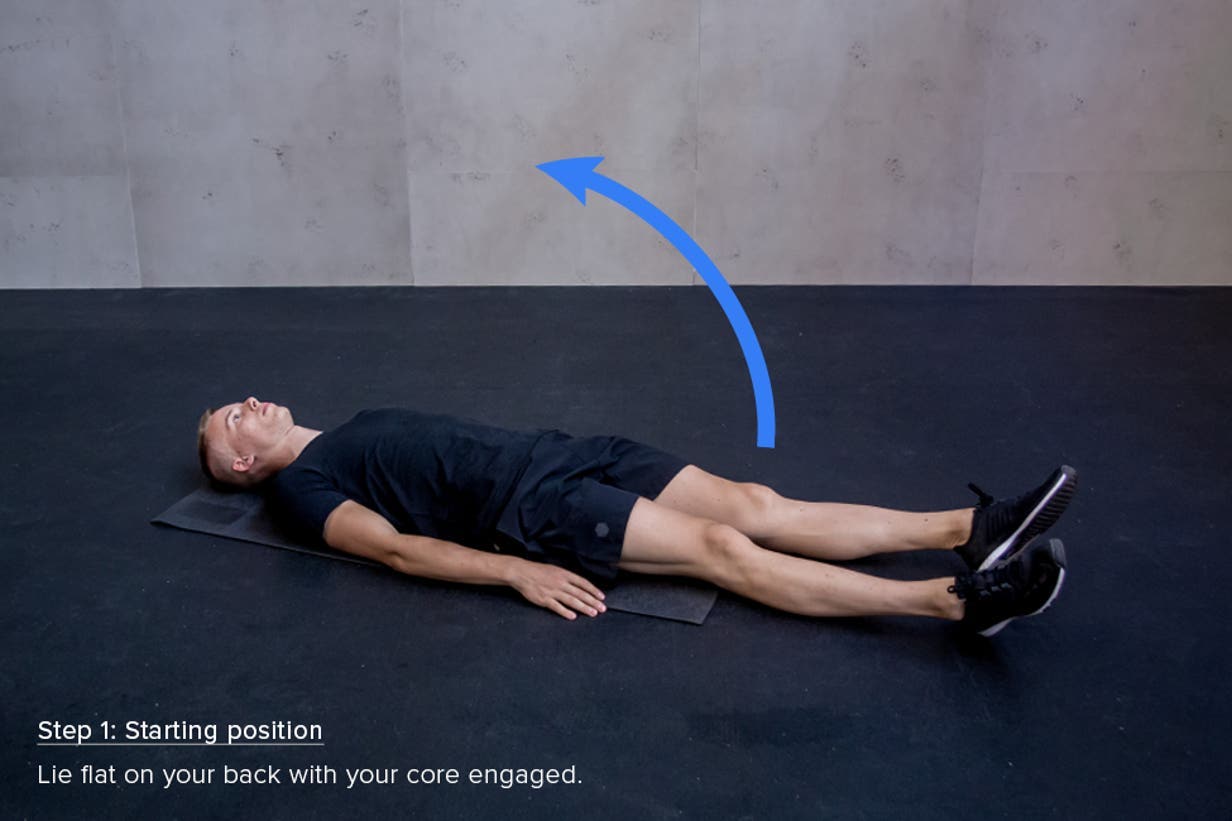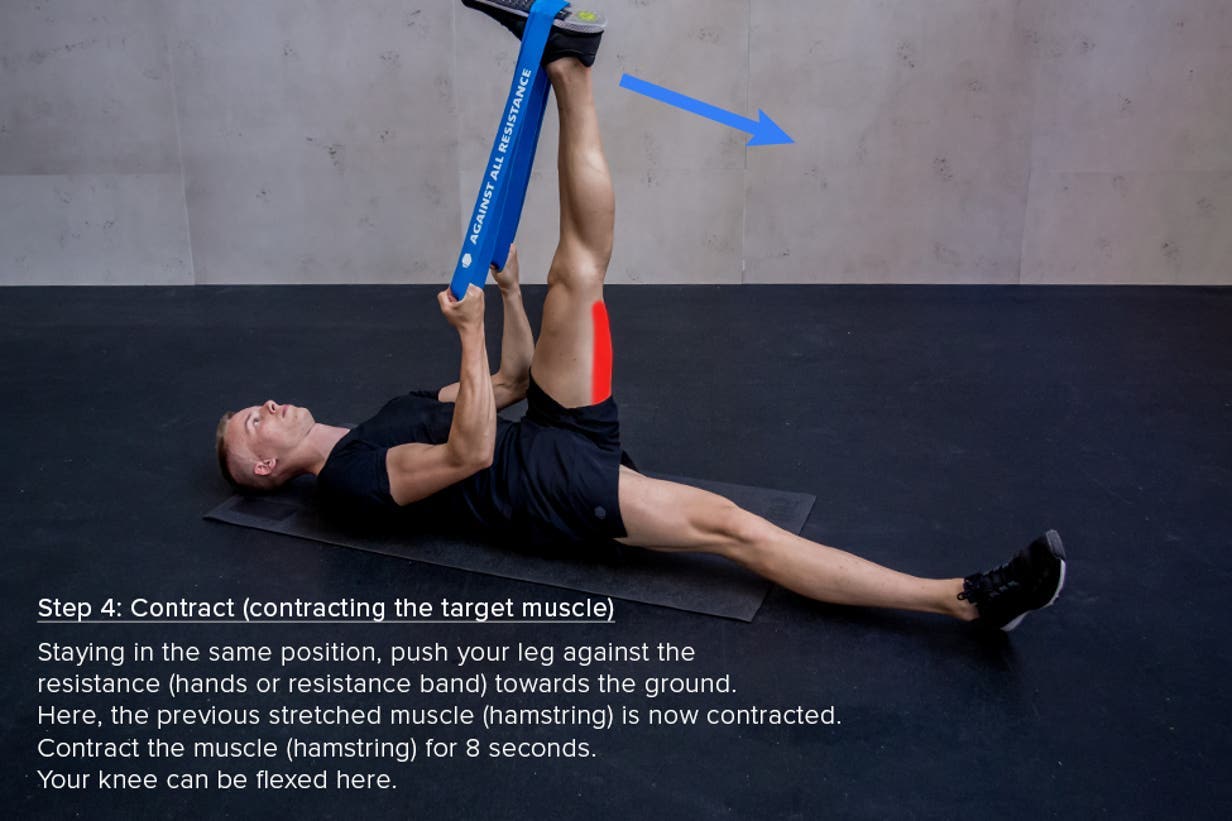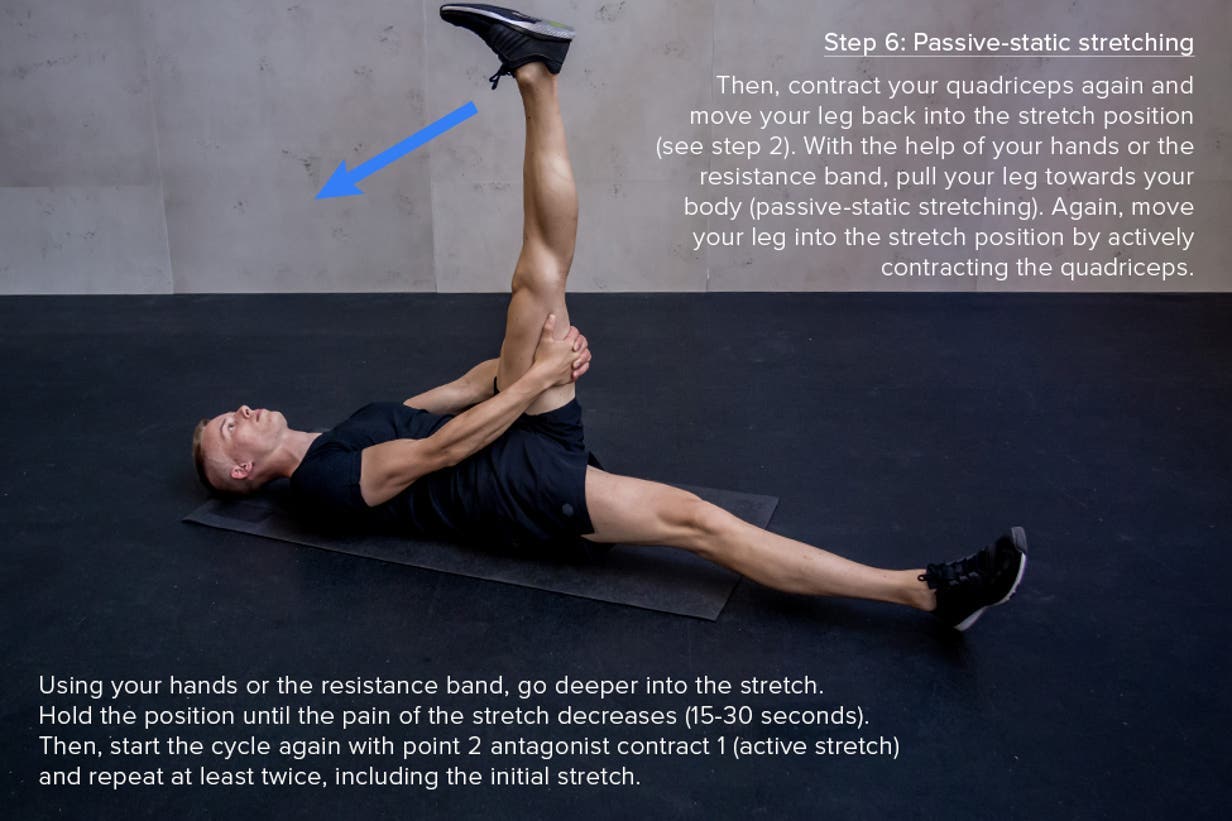In training, once we reach a goal or get used to an exercise, we progress to the next stage. Ever thought about applying this strategy to the way you stretch? PNF – Proprioceptive Neuromuscular Facilitation – is a more advanced method of stretching. Whereas the traditional forms of stretching like static, dynamic, passive & active stretching are still an effective way to improve muscle interaction, maintain range of motion and keep your muscle tissue in good condition, well-applied PNF allows you to progress with your flexibility / ROM and strengthen your muscles at the same time.
What does a PNF stretch consist of?
There are three PNF methods: the contract-relax method (CR), the antagonist-contract method (AC), and a combination of the two – contract-relax-antagonist-contract (CRAC).
- CR involves contracting, holding, releasing and stretching the target muscle.
- AC is a static or dynamic contraction of the opposite muscle, before stretching the target muscle, followed by a static or dynamic stretch.
- CRAC (if you haven’t already guessed it) combines these two methods and is said to have the best effect in terms of stretching and strengthening the targeted muscle.
Don’t worry if these descriptions and terms sound a little confusing to you right now, you’ll discover a step-by-step how to guide below.
When – and when not – to use PNF…
Before we show you how, there a few factors you need to consider before applying this method to your training:
- Always ensure you fully understand the correct movement. We even recommend asking an expert or personal trainer to advise you on your form. You may think this is just stretching, but when things begin to get more technical, the risk of injury is heightened, especially if the movement is not performed correctly.
- Consider if you really need it first. If you are not an experienced athlete and your main aim is simply to improve your stretching ability, then static stretching may be enough for the time being. Because these methods are easier, the chances of you doing them wrong and causing yourself an injury are lower, yet the effectivity is still relatively high in relation to your goal.
- PNF is most effective for advanced athletes, who already have experience in stretching. Using CRAC together with dynamic elements will improve the athlete’s passive flexibility as well as sports specific active flexibility, and strengthen the targeted muscle group.
- PNF stretches should only be carried out on certain muscle groups. For example, we don’t recommend this method for the shoulders. The reason being, when these muscles – for example the rotator cuff – become too loose, the joint can come out of the socket. PNF stretches should therefore be applied to long kinetic chains like the hamstrings, glutes, hip flexors and back.
- Pay attention to when you stretch using PNF. Studies indicate it increases muscular function when performed after exercise, but decreases muscle function if performed before. It’s also said that dedicating a couple of sessions per week to stretching alone can increase range of motion and muscular performance in the long-run.
How to PNF…
A PNF stretch is slightly more complex than the dynamic or static stretch you’re used to. That’s why it’s important you fully understand the movement. In order to perform a safe CRAC stretch, follow the steps below:






Let’s recap
PNF is an advanced form of stretching that allows you to target a specific muscle group and stretch it as well as strengthen it. It involves 3 different methods, CR, AC & CRAC. CRAC is a combination of the other two, and is said to have the most positive effect on athletic performance. However, the effectiveness of PNF depends on a few factors, such as the muscle group targeted, how advanced the athlete is and their goal, as well as when the stretching session is performed in relation to exercise.